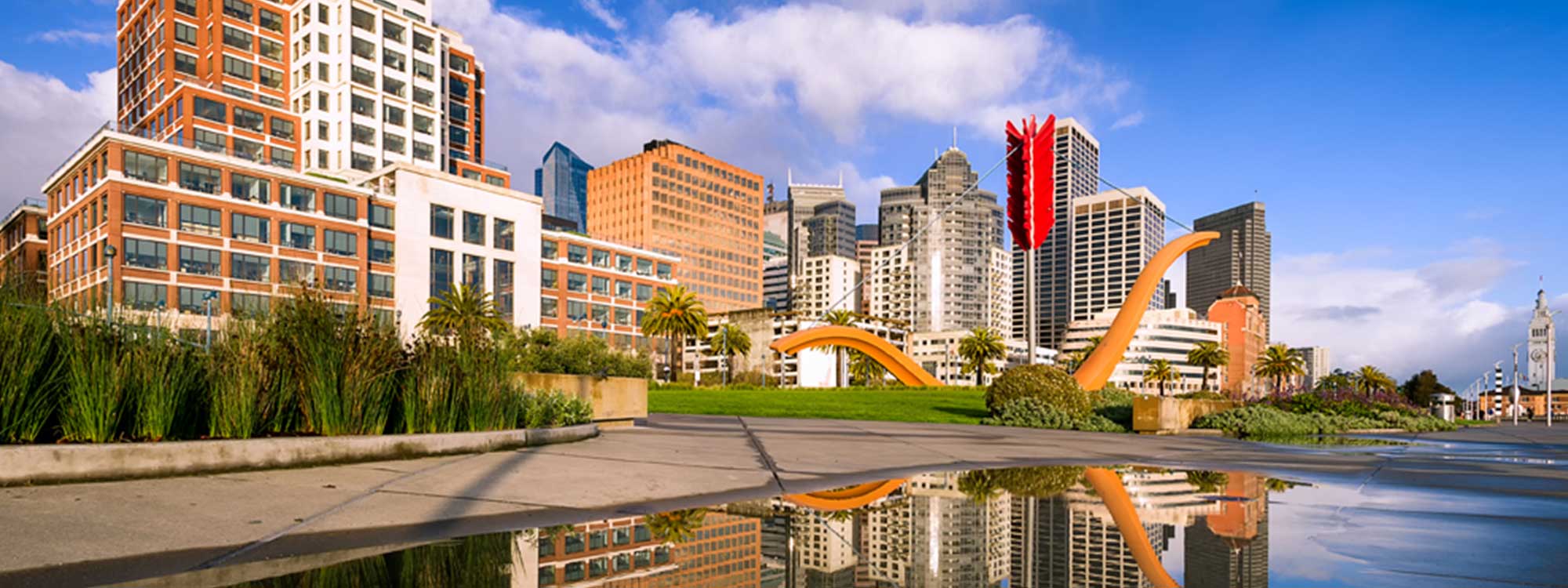We are already feeling the effects of sea level rise in the Bay Area. Extreme weather events are increasing, and flooding is now commonplace along the Embarcadero in San Francisco, in San Rafael, and elsewhere during King Tide events each month. Our daily commutes, the goods and services we depend on, the places we live and work, and the natural spaces that make the Bay Area a beautiful place to live will all be impacted. Highways will be affected with as little as 1 foot of flooding, impacting the commutes of hundreds of thousands of residents and visitors daily. With two feet of flooding, communities will start feeling serious impacts to their homes and jobs. Sea level rise will fundamentally change our relationship with the Bay, and will threaten our public access to the shoreline and our enjoyment of shoreline recreation and habitats.
There is no easy solution for sea level rise in the Bay Area. As we plan for the impacts of climate change throughout the region, we need to reimagine our relationship to the shoreline and work together for true long-term prosperity. This transformation will require an unprecedented level of regional coordination and a need to confront our shared history while centering social equity in our decision-making practices. Regional action to reduce impacts due to climate change requires collective will, regionwide implementation, and broad leadership—no one agency, jurisdiction, or community can or should do it alone.
Over the last six months, the Bay Conservation and Development Commission has facilitated Bay Adapt, an initiative to establish regional agreement on the actions necessary to protect our people and the natural and built environment from rising sea levels. The goal of the Bay Adapt process is to build a new type of regional collaboration among a wide variety of agencies and stakeholders, based on a strong foundation of climate science and the proactive Bay Area adaptation efforts both already underway and proposed. Through this collaborative, action-setting initiative, Bay Area regional, local, and community leaders will identify, deliberate, and commit to a set of shared actions that will allow the Bay Area to adapt better and faster to a rising Bay.
In the coming weeks, Bay Adapt will host a participatory workshop with Greenbelt Alliance and Bay Area leaders from the public, private, and non-profit sectors to develop the Bay Area’s first region-wide strategy to protect people and the natural and built environment from a rising Bay. Hosted by the San Francisco Bay Conservation and Development Commission (BCDC) as part of the Bay Adapt process, at this meeting we will share and discuss the draft Joint Platform, an initial set of priority actions to collectively plan and prepare for sea level rise in the Bay Area. The date is still to be determined, but in the meantime, we encourage you to sign up to receive updates on the Bay Adapt process here.
Executive Director Amanda Brown-Stevens is a member of the Leadership Advisory Group (LAG) and Director of Climate Resilience, Zoe Siegel, has played a key role in the development of the Joint Platform. The LAG provides strategic direction, feedback on proposals, and leadership in implementing the Joint Platform actions. Greenbelt Alliance looks forward to working closely with BCDC and many other partners to help implement the ideas and strategies that are emerging from the Bay Adapt Process.
Learn more about Bay Adapt here.
We look forward to discussing the Bay Adapt effort with you at the Kick-Off Workshop soon!
Photo: David Yu via Flickr





